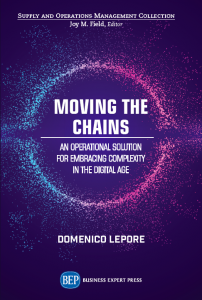
It’s a question that must be on so many people’s minds today. All around us, from the people who “deliver” our day-to-day services to the people who lead countries, let alone smaller areas of responsibility, some days we seem to be drowning in incompetence. How is it possible that so much incompetence abounds and why do we have incompetent leaders? And more to the point, what can we do about it?
At Intelligent Management, our focus is on how organizations are managed and how to do that fundamentally better for 21st century needs. What has been clear for some time now is that if we do not tackle problems at the source, we cannot solve them. There is a lot of talk about leadership. But if we try and address leadership without looking at how organizations are shaped, we are missing the most important piece of the puzzle.
Pyramids and silos
The classic organigram of companies remains a pyramid where companies are divided up vertically into business functions with a head and those heads report vertically upwards to a CEO. This form of organization inevitably creates silos and artificial barriers to flow. That is particularly dangerous in the digital age when achieving speed of flow is paramount.
When you consider an organization to be a pyramid and in silos, then even subliminally it affects every aspect of human interaction, including how people are hired, how they communicate, how they think about themselves and their role in the company, how they are compensated and how their careers progress, or don’t. Indeed, people may be promoted not because they are competent but because they are not a threat to those above them. The pyramid shape can encourage, even linguistically, the notion of climbing a ladder, stepping on people to get ahead. Progress is less connected with competence than with the ability to “play the game”. The pyramid shape can engender a style of leadership that is of dominance and this can encourage behaviour based on bullying, overconfidence and even narcissism. (Sound familiar?)
Organizations are networks
Many organizations may still see themselves as pyramids but today humans are more evolved. When they work together in an organization they are part of networks of conversations. Understanding that organizations today are networks is a crucial shift that affects every aspect of management. It gives us the opportunity to manage so much better the way people interact, collaborate and communicate. Perhaps most importantly, it provides the possibility for everyone in the organization to contribute with their talents and competencies IF we have a way of harnessing those competencies.
Putting competence first in practice
The clash between a functional organization and achieving cross-functional goals is, quite plainly and simply, what keeps organizations stuck. There are many attempts to “fix” this problem with work arounds (Slack may be an example of this). But unless we tackle the problem where the real constraint is, a work around is the best we can hope for and many issues that interfere with flow remain unresolved.
When we come to understand the organization as a whole system, not something artificially divided up into silos, then we can begin to redesign the interactions for maximum effectiveness. And a whole system requires whole people, not just the fragments that come through in job descriptions. Instead of putting people into “boxes” we can see them as having a multiplicity of competencies to contribute towards the goal.. An organization, at its most fundamental level, carries out projects and repetitive processes. If we have a database of all the competencies our people have, then the organization has a pool of competencies to draw from in order to carry out all the processes and projects that have to be carried out.
This can only be effective if there is a way to synchronize those competencies. This is what allows us to direct the network towards its goal. It is for this reason that we created Ess3ntial – to provide finite capacity scheduling ability based on competencies, not just resources. Not only is it a game changer, it paves the way for a much smoother digital transformation where processes and flow are are key.
A word about leadership
Transforming organizations so that they can work better is something we have been working on for over 20 years. Systems science and network theory inform the organizational design we have come to call the ‘Network of Projects‘. What is clear is that an organization that is flatter, faster and fairer empowers people to connect their whole selves with their work. It cannot be led by bullies or narcissists.
A real leader does not necessarily have to be someone with a big personality. They may be, but a real leader is humble and transparent, because that is the only way for them to help others connect with their highest principles and purpose.
 Since 1999, we have been presenting a new model for a systemic organization in detail, both in terms of the mindset and how to conduct operations. We work alongside CEOs and Executive Teams to support the shift towards more effective, systemic strategy and operations. Our books include ‘Deming and Goldratt: The Decalogue‘, ‘Sechel: Logic, Language and Tools to Manage Any Organization as a Network’, ‘The Human Constraint‘, ‘Quality, Involvement and Flow: The Systemic Organization’ , and now ‘Moving the Chains: An Operational Solution to Embrace Complexity in the Digital Age‘ .We support our international clients through education, training and the Ess3ntial multi-project software using Critical Chain to schedule competencies and unlock the potential of human resources. Based on our proprietary Decalogue methodology.
Since 1999, we have been presenting a new model for a systemic organization in detail, both in terms of the mindset and how to conduct operations. We work alongside CEOs and Executive Teams to support the shift towards more effective, systemic strategy and operations. Our books include ‘Deming and Goldratt: The Decalogue‘, ‘Sechel: Logic, Language and Tools to Manage Any Organization as a Network’, ‘The Human Constraint‘, ‘Quality, Involvement and Flow: The Systemic Organization’ , and now ‘Moving the Chains: An Operational Solution to Embrace Complexity in the Digital Age‘ .We support our international clients through education, training and the Ess3ntial multi-project software using Critical Chain to schedule competencies and unlock the potential of human resources. Based on our proprietary Decalogue methodology.





Leave a Reply